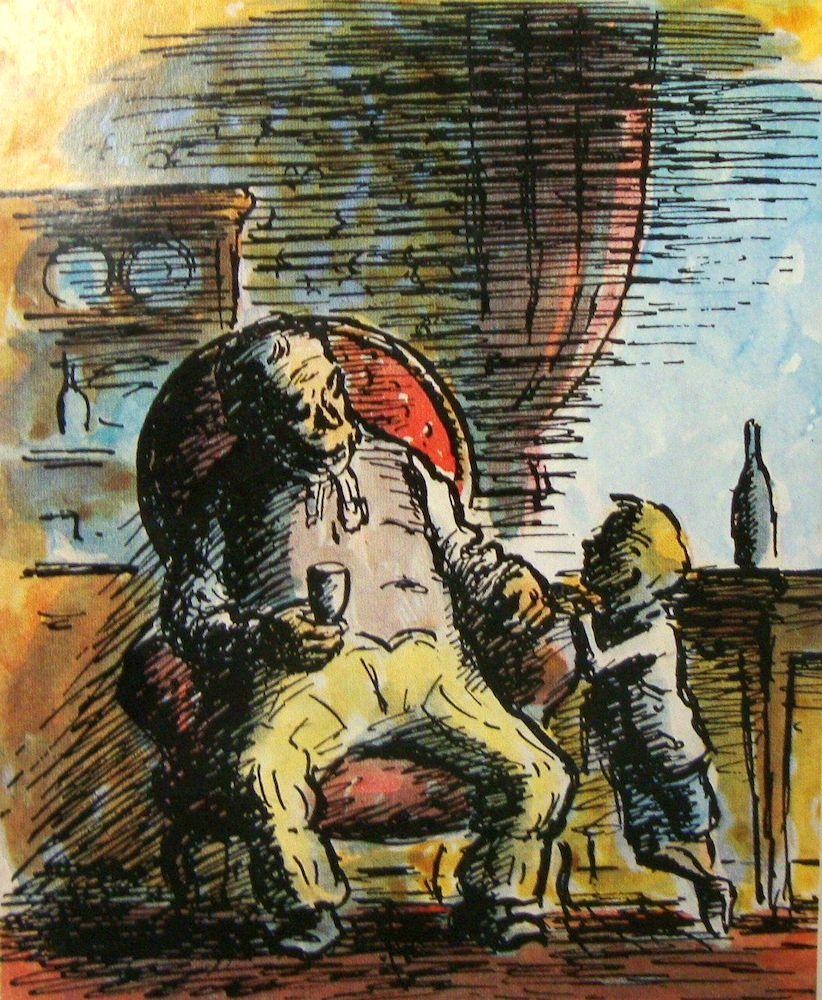
- ID
- s2
- Title
- Uncle Silas Stories
- Genre
- Story Collection
- Document Types
- Film & Television
- Radio Dramatizations
- Comic Fiction
- Character: Uncle Silas
Uncle Silas was first introduced to readers in a tale called The Lily, in the Listener (February 22, 1933 p. 306).
In the preface to My Uncle Silas (pp. 9-11), Bates says that the character of Uncle Silas as well as a number of the stories are firmly based on real events in the life of Joseph Betts, 'late husband of my maternal grandmother's sister Mary Ann.' Betts is described at greater length in Bates's The Vanished World (pp. 60-61) as a 'reprobate, rapscallion, crafty as a monkey, liar, gardener of much cunning, drinker of infinite capacity, afflicted with one blood-shot eye that gave him a look of devilish fascination.' He is similarly described in Through the Woods (pp. 24-27), where Bates mentions that he underwent a serious operation at seventy-five and 'went gaily on to live another fifteen years of aggravated wickedness and cunning.' In each of these accounts, and in the Silas stories, Bates recalls fondly his visits to Betts in his Bedfordshire cottage in the town of Sharnbrook. Bates further discusses Silas and Joe Betts in Edward Garnett (p. 51, attached).
Bates claims some of the stories to be "so near to reality that they needed only the slightest recolouring on my part" (namely The Lily, The Wedding, The Revelation, Silas the Good, and Death of Uncle Silas). Others he says "have been inspired by that sort of apocryphal legend which is the inheritance of every country child who keeps his ears cocked when men are talking." He says that the publication of "Death of Uncle Silas" produced a "larger volume of correspondence than any full-length book of mine has done before or since," in which the "resurrection of Uncle Silas" was demanded. He characterizes Silas as "the original Adam, rich and lusty and robust" and "a protest against the Puritanical poison in the English blood." Bates notes that "to those who find these stories too Rabelaisian, far-fetched, or robust, my reply would be that, as pictures of English country life, they are in reality understated." He closes by finding no reason why the character of Uncle Silas should not produce more stories, and expresses the hope that in that case "it is my great hope that I shall again be lucky enough to have the collaboration of Mr Edward Ardizzone whose crabbed and crusty pictures are so absolutely and perfectly in the spirit of every page they illustrate;" indeed, the 1957 Sugar for the Horse is an additional collection of Silas stories, illustrated by Ardizzone.
In a fine introduction (pp. 3-6, attached) to a 1984 Oxford Press edition of the stories, V.S. Pritchett sets them in the broader context of Bates's gifts in the short story genre, finding that Bates avoids farce with Silas through the use of the "passive, wondering audience" of the boy and the fidelity of style to the "techniques of rural story-telling...Uncle Silas is in fact the scandalizing village memory at work."
Radio adaptations of many of the tales were broadcast by the BBC in 1985 read by David Neal. (They are available to listen online at the internet archive, Link 1, Link 2)
A television adaptation, with Bates's son Richard Bates as executive producer and produced by Yorkshire Television (YTV), starred Albert Finney in nine episodes shown in 2001 and 2003. The series included the following Uncle Silas stories (sometimes combining two stories in one episode): The Wedding; Queenie White; The Widder; The Blue Feather; Silas & Goliath; The Revelation; A Funny Thing; Finger Wet, Finger Dry; Shandy Lil; The Race; A Happy Man; The Christening (this last episode however does not correspond to any Bates story).
The stories have appeared in five collections:
- 1939 (My Uncle Silas) the initial collection of 14 stories
- 1957 (Sugar for the Horse) containing a further 12 stories
- 1965 (The Wedding Party) containing Shandy Lil and A Teetotal Tale
- 1976 (The Yellow Meads of Asphodel) containing Loss of Pride
- 2016 (The Complete My Uncle Silas Stories) an ebook that contained all 29 tales
A number of other Bates stories bear more than a passing resemblance to Uncle Silas tales either in style or characterisation: Castle in the Air; The Place Where Shady Lay; The Flying Goat; Halibut Jones; A Midland Portrait; Great Uncle Crow; The Watercress Girl.
